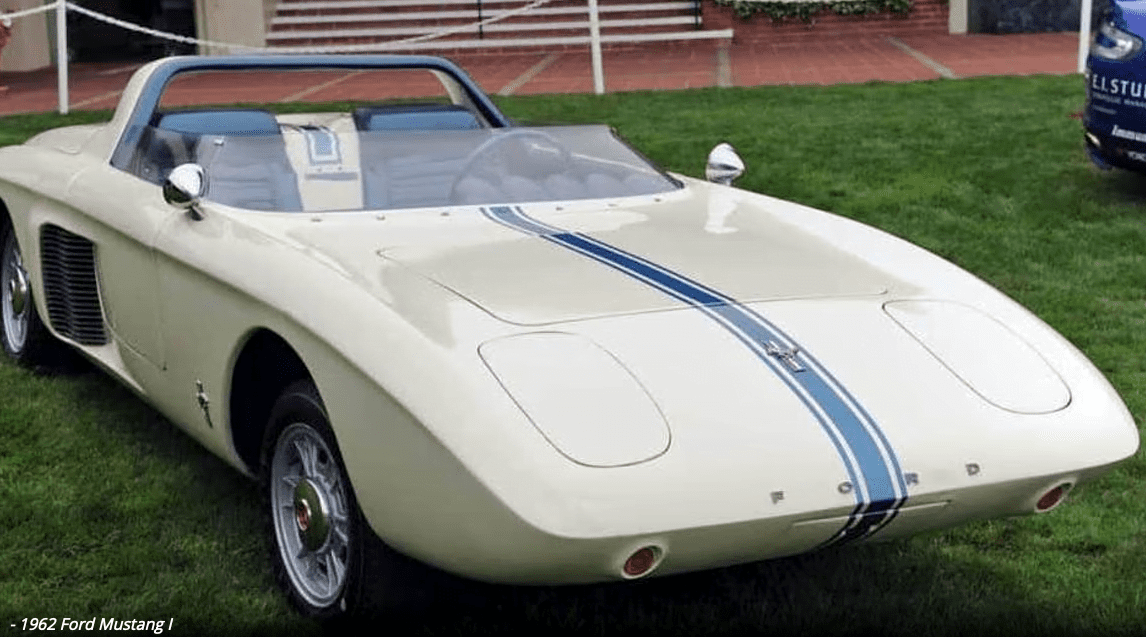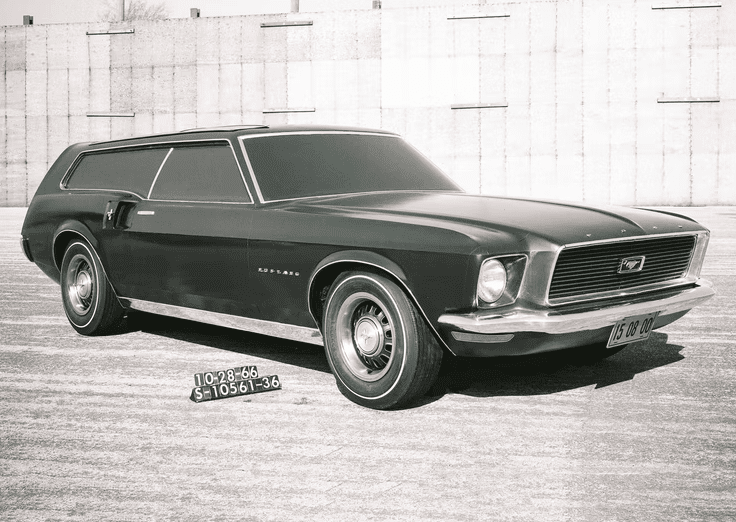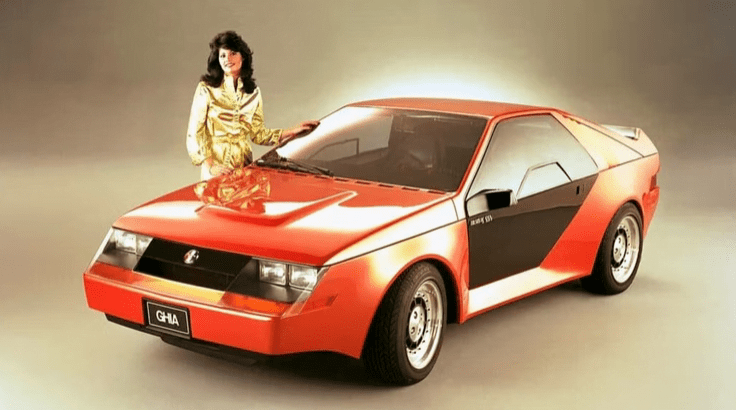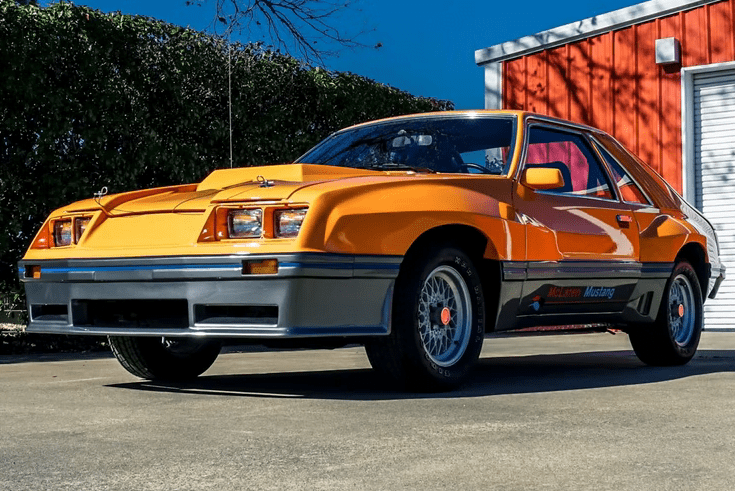Ford slashed a lot over the years to keep the Mustang affordable. But those prototypes were a real diamonds! Here’s some that really stand out:
Great engineering that sadly didn’t make it into production
Ford has a rich history of creating innovative and groundbreaking concepts for its iconic Mustang. These visionary designs pushed the boundaries of automotive engineering and captured the imaginations of car enthusiasts around the world. However, while these concepts showcased remarkable potential, many of them never made it beyond the prototype stage due to various factors, including cost considerations and the need to maintain the Mustang’s affordable muscle car identity. Let’s explore some of these notable and unrealized Mustang concepts that remain coveted by collectors and automotive enthusiasts.
One such concept that never saw the light of day was the Ford Mustang Mach 2. Introduced in 1967, the Mach 2 was envisioned as a high-performance, mid-engined sports car that would have revolutionized the Mustang lineup. Its striking design, with a long hood and a sleek, aerodynamic profile, exuded power and aggression. However, the Mach 2 ultimately succumbed to financial constraints and was shelved before production could commence.
Another concept that generated considerable excitement was the Ford Mustang Avanti. This prototype, unveiled in 1964, boasted a futuristic and avant-garde design, featuring a dramatic fastback roofline and unique styling cues. The Avanti’s distinctive appearance was coupled with innovative features, such as retractable headlights and a luxurious interior. Despite its captivating design, the Avanti remained an unrealized dream, as production plans were abandoned due to cost concerns.
The Ford Mustang Milano concept, showcased in 1970, aimed to redefine the pony car segment with its unconventional and daring styling. This futuristic prototype boasted a wedge-shaped body, gull-wing doors, and a striking orange and silver color scheme. However, the Milano concept remained an experimental exercise, never making it to the production stage.
In the early 2000s, Ford presented the Mustang GT-R concept, designed to showcase the brand’s engineering prowess and performance capabilities. This track-focused prototype featured a supercharged V8 engine, upgraded suspension, and aerodynamic enhancements. While the Mustang GT-R generated enthusiasm among enthusiasts, it ultimately remained a one-off concept that did not enter series production.
These unrealized Mustang concepts serve as a reminder of the creative ambition and innovation that drives automotive design. While they may not have made it to production, they continue to inspire and ignite the imaginations of car enthusiasts worldwide. These concept cars embody the spirit of pushing boundaries and challenging the status quo, contributing to the ongoing legacy of the Mustang as an icon of American muscle.
Although these concepts never graced our garages, their impact on automotive design and the Mustang legacy is undeniable. Their bold and daring aesthetics, coupled with groundbreaking technologies, have left an indelible mark on the Mustang’s evolution and serve as a testament to Ford’s unwavering commitment to pushing the boundaries of automotive excellence.
While these concepts remain rarities and objects of fascination for collectors and enthusiasts, the spirit of innovation and ambition they embody continues to drive the ongoing development of the Mustang and cement its position as a symbol of American automotive prowess.
Ford Mustang I (1962)
The Ford Mustang I, introduced in 1962, marked the beginning of the Mustang’s journey and set the stage for its future success. This compact, two-seater roadster captured the imagination of car enthusiasts with its sporty design and innovative engineering.
At the time of its debut, the Mustang I showcased a rear-mounted V4 engine sourced from Ford Europe, which delivered impressive performance for its size. The original concept behind the Mustang was to create a nimble and lightweight sports car that could compete with popular European models like the Triumph TR3 or MG A. This ambitious vision reflected Ford’s desire to offer a compelling alternative to the established players in the sports car market.
The Mustang I received significant attention from the press, with wide coverage that fueled public excitement. The car’s sleek lines, open-top design, and spirited performance garnered positive reactions from both enthusiasts and the general public. This early campaign successfully established the Mustang name and laid the groundwork for its future endeavors.
However, despite the positive reception and initial direction of the Mustang I, Ford made a pivotal decision to shift the Mustang’s trajectory towards a different direction – the path of the muscle car. Recognizing the growing demand for powerful and aggressive vehicles in the American market, Ford sought to capitalize on the emerging muscle car trend and redefine the Mustang’s identity.
The transition from a small, lightweight sports car to a performance-oriented muscle car would ultimately shape the Mustang’s iconic legacy. With subsequent generations, the Mustang evolved into a symbol of American power and speed, capturing the hearts of enthusiasts worldwide.
While the Mustang I did not directly influence the muscle car persona that the Mustang eventually embraced, its impact on Ford’s decision-making and the early public fascination with the Mustang name cannot be underestimated. The Mustang I played a crucial role in establishing the Mustang’s brand identity and generating enthusiasm for the upcoming iterations of this iconic American car.
The story of the Mustang I serves as a reminder of the dynamic nature of automotive development and the choices that shape a brand’s destiny. While the Mustang’s journey took a different path than initially envisioned, the Mustang I will forever be remembered as the spark that ignited the Mustang’s iconic status and paved the way for the enduring legacy that continues to captivate enthusiasts to this day.
Ford Mustang Mach 2 (1967)
One of the intriguing concepts that emerged from Ford’s exploration of the Mustang lineup was the Ford Mustang Mach 2, introduced in 1967. The Mach 2 concept represented a departure from the traditional Mustang formula, offering a bold and forward-thinking design that pushed the boundaries of automotive engineering.
The Mach 2 was envisioned as a mid-engine sports car, boasting a layout that positioned the engine behind the driver for enhanced performance and handling dynamics. This configuration provided the Mach 2 with a unique and striking appearance, as well as improved weight distribution for optimal driving characteristics.
With its aerodynamic shape and aggressive lines, the Mach 2 exuded an undeniable sense of speed and sophistication. Designed to be a road-going alternative to the renowned GT40 racing car, the Mach 2 aimed to capture the essence of high-performance motoring in an affordable package. It was poised to be a formidable contender in the sports car market, particularly against the Italian rivals that dominated the segment.
However, despite its promising potential, the Mach 2 ultimately faced the fate of many innovative concept cars. Ford executives, in their quest to maintain the Mustang’s identity as an affordable muscle car, made the decision to cancel the Mach 2’s production. This move reflected the challenges of balancing innovation with market demand and cost considerations.
While the Mach 2 never reached the production stage, its significance lies in its contribution to the evolution of the Mustang brand and its impact on the future development of Ford’s sports car lineup. The concept’s bold design language and engineering innovations helped shape subsequent iterations of the Mustang, influencing their performance capabilities and aesthetic appeal.
Although the Mach 2 was never realized as a viable competitor for the Italian sports cars, its legacy lives on as a testament to Ford’s commitment to pushing boundaries and exploring new possibilities in automotive design and engineering. The Mach 2 concept serves as a reminder of the dynamic nature of automotive development, where even unrealized dreams can leave a lasting impact on the industry and inspire future generations of cars.
While the Mach 2 may have remained a missed opportunity, its spirit of innovation and ambition continues to resonate within the Mustang brand, fueling ongoing advancements and ensuring the enduring appeal of this iconic American muscle car.
Ford Mustang Aspen Wagon (1966)
In the realm of unique and distinctive Mustang concepts, the Ford Mustang Aspen Wagon, introduced in 1966, stands out as a captivating example. Blending the practicality of a station wagon with the sporty allure of a shooting brake, the Aspen Wagon captured attention with its unconventional yet brilliant design.
Unlike traditional station wagons of its time, the Mustang Aspen Wagon featured a sleek and elongated silhouette that exuded sophistication and elegance. The addition of side vents and a distinctive crease in the rear window further enhanced its dynamic and eye-catching appearance. This prototype was a true head-turner, showcasing a perfect blend of practicality and style.
Ford revisited the idea of the Mustang wagon ten years later with a second prototype in 1976. While it differed in some design elements, such as the absence of side vents and a rear crease, this variant incorporated wooden inserts and a roof rack, adding a touch of vintage charm reminiscent of classic wagons. Although it drew some visual similarities to the Chevrolet Vega, the unique character of the Mustang Aspen Wagon still shone through.
The allure of the Mustang Aspen Wagon extended beyond its distinctive looks. With its blend of performance, versatility, and visual appeal, it possessed the potential to become a memorable movie car. The Aspen Wagon’s design and aura were perfectly suited for on-screen presence, capturing the attention of audiences and elevating the overall cinematic experience.
While the Mustang Aspen Wagon remained a prototype and never made it into production, its allure as the ideal movie car is undeniable. Its combination of style, practicality, and the iconic Mustang DNA make it a dream vehicle for any film production. The Aspen Wagon embodies the spirit of adventure, capturing the imagination of both car enthusiasts and movie lovers alike.
Although the Mustang Aspen Wagon may not have graced the silver screen, its influence on automotive design and the Mustang legacy is significant. It represents a time when Ford explored unconventional possibilities and pushed the boundaries of the Mustang’s versatility. Its unique aesthetics and the allure of being a rare and limited prototype make it a sought-after gem for collectors and automotive enthusiasts.
While the Mustang Aspen Wagon may have remained a tantalizing concept, its impact on automotive design and the Mustang’s storied history serves as a testament to Ford’s commitment to innovation and pushing the boundaries of what is possible in the world of automobiles.
Ford Mustang RSX (1979)
In 1979, Ford sought to expand the Mustang’s motorsport repertoire with the introduction of the Ford Mustang RSX. Recognizing the brand’s dominance in drag racing, street racing, and circuit racing, Ford set its sights on conquering the rally stage. The Mustang RSX emerged as a homologation rally concept, designed to meet the requirements for participation in rally competitions.
Equipped with a powerful 2.3-liter engine, the Mustang RSX showcased Ford’s intention to turbocharge the vehicle, enhancing its performance capabilities and ensuring it could compete in the demanding rally environment. The concept gained significant traction in the media and generated enthusiasm among the public, eager to witness the Mustang’s rally prowess.
However, despite the initial buzz and positive reception, Ford eventually made the difficult decision to drop the Mustang RSX project. The challenges and costs associated with transforming the Mustang into a competitive rally car proved too demanding, leading to the discontinuation of the concept.
While the Mustang RSX never had the opportunity to prove itself on the rally circuit, its presence and the anticipation surrounding its rally capabilities showcased Ford’s ambition to diversify the Mustang’s motorsport achievements. The concept’s turbocharged powertrain and rallying aspirations served as a testament to Ford’s commitment to pushing the boundaries of the Mustang’s performance potential.
While the Mustang RSX project may have been abandoned, its legacy lives on as a testament to Ford’s pioneering spirit and unwavering pursuit of automotive excellence. The concept demonstrated Ford’s willingness to explore new territories and its dedication to delivering thrilling and dynamic driving experiences to enthusiasts.
Although the Mustang RSX remains an unrealized dream, its impact on the Mustang’s evolution and Ford’s motorsport ambitions cannot be overlooked. The concept stands as a reminder of the Mustang’s versatility and the brand’s commitment to pushing the boundaries of performance and innovation.
While the Mustang may not have achieved significant success as a rally car, its legacy as an American icon of power and performance continues to captivate enthusiasts worldwide. The Mustang RSX concept embodies the spirit of ambition and showcases the relentless pursuit of automotive excellence that defines the Mustang brand.
Ford Mustang McLaren M81 (1980)
In 1980, Ford joined forces with the renowned McLaren racing team in Michigan to create a limited-production masterpiece known as the Ford Mustang McLaren M81. This extraordinary collaboration resulted in a unique street racer that pushed the boundaries of performance and exclusivity.
With only 10 cars ever produced, the Mustang McLaren M81 remains an incredibly rare and sought-after gem among automotive enthusiasts. The collaboration between Ford and McLaren injected a dose of racing DNA into the iconic Mustang, transforming it into a high-performance machine.
Under the hood of the Mustang McLaren M81 lurked a turbocharged 2.3-liter engine that generated an impressive 190 horsepower. This powerplant, combined with a lightweight body, provided exhilarating acceleration and dynamic handling characteristics. The inclusion of a roll cage and racing suspensions further enhanced the car’s track-ready capabilities, ensuring an unforgettable driving experience.
The Mustang McLaren M81 received favorable reception upon its release, with enthusiasts appreciating its unique blend of performance and exclusivity. However, the exclusivity of this limited-production model came at a cost, as customers had to pay a premium price tag approximately three times higher than that of a regular Mustang.
Despite the limited production run and higher price point, the Mustang McLaren M81 remains an iconic representation of the collaboration between two automotive powerhouses. Its rarity and exceptional performance continue to captivate collectors and enthusiasts who appreciate the fusion of racing heritage and street performance.
The Mustang McLaren M81 stands as a testament to Ford’s commitment to pushing the boundaries of automotive engineering and design. Its association with the McLaren racing team adds an extra layer of prestige and further solidifies its place in automotive history.
Today, the Ford Mustang McLaren M81 holds a revered position among collectors and enthusiasts, cherished for its exclusivity, performance pedigree, and enduring appeal. Its limited production numbers and the association with McLaren make it an automotive treasure that showcases the passion and innovation of both Ford and McLaren.
The Mustang McLaren M81 exemplifies the spirit of collaboration, pushing the boundaries of what is possible and delivering a truly exceptional driving experience. As an automotive icon, it continues to inspire and captivate those who have the privilege of witnessing its rare presence on the road.
Honorable mention: Ford Mustang Giugiaro (2006)
The Ford Mustang Giugiaro concept, unveiled in 2006, captivated enthusiasts with its striking blend of traditional muscle car presence and Italian design aesthetics. Although it never made it into full-scale production, the 20 prototypes produced showcased the potential of this exceptional concept car.
The Mustang Giugiaro concept was a testament to the global appeal of the Mustang brand. By incorporating elements that would resonate with both hardcore Mustang fans and European enthusiasts, Ford aimed to create a vehicle that would transcend borders and captivate automotive enthusiasts worldwide.
Underneath its captivating exterior, the Mustang Giugiaro concept boasted impressive performance capabilities. The heart of the beast was a supercharged 4.6-liter V8 engine, delivering a staggering 500 horsepower. This formidable powerplant ensured that the concept retained the true essence of the Mustang spirit, providing exhilarating acceleration and a thrilling driving experience.
The design of the Mustang Giugiaro concept was a harmonious blend of American muscle car DNA and Italian beauty. Its bold and aggressive stance exuded the commanding presence that has become synonymous with the Mustang name, while incorporating refined touches inspired by Italian design sensibilities. The result was a visually captivating concept that turned heads and captured the imagination of onlookers.
While the Mustang Giugiaro concept was met with overwhelming enthusiasm from automotive enthusiasts, Ford ultimately made the decision to put it on hold, leaving its fate uncertain. However, the concept remains a cherished gem in the hearts of Mustang enthusiasts, and its unique blend of power, design, and global appeal continues to fuel discussions and admiration within the Mustang community.
Now, as we reflect on the Mustang Giugiaro concept and its impact on the automotive world, we invite you to share your favorite Mustang concepts in the comments below. From the iconic designs of the past to the exciting possibilities of the future, the Mustang concept lineage is rich with innovation and inspiration. Let’s celebrate the legacy of the Mustang and the boundless creativity that continues to shape its remarkable journey.
FAQ: Ford Mustang
What car does John Wick drive?
John Wick, the fictional character portrayed by Keanu Reeves in the film series, is associated with a few different cars throughout the movies. In the first film, John Wick drives a 1969 Ford Mustang Mach 1. In later films, he also drives a Ford Mustang Boss 429 and a Ford Mustang GT500.
How much should a Mustang cost?
The cost of a Ford Mustang can vary depending on factors such as the model year, trim level, optional features, and the new or used condition. The starting price for a new Ford Mustang typically ranges from around $27,000 to over $70,000 for high-performance models like the Shelby GT500. Used Mustangs can have a wide range of prices depending on factors such as mileage, condition, and age.
Is Mustang a fancy car?
The Ford Mustang is often considered a desirable and stylish car, but whether it is considered “fancy” can be subjective. The Mustang has a long history of performance and iconic design, offering a blend of sportiness, comfort, and technology. However, the level of luxury and features can vary depending on the specific model and trim level.
What is the cheapest Mustang you can buy?
The cheapest Ford Mustang you can buy is typically the base model Ford Mustang EcoBoost. The EcoBoost model offers a turbocharged four-cylinder engine and a lower starting price compared to the higher-performance V8-powered Mustang GT models.
Why are older Mustangs so cheap?
The prices of older Mustangs can vary depending on factors such as their condition, rarity, and model year. While some older Mustangs, particularly classic and highly sought-after models, can be quite valuable, other older Mustangs may be more affordable due to factors such as high mileage, wear and tear, or the presence of cosmetic or mechanical issues. Additionally, the affordability of older Mustangs may be influenced by market demand and supply dynamics.
What car was replacing the Mustang?
Ford has not replaced the Mustang with another car model. The Mustang remains in production as Ford’s iconic pony car, offering a blend of performance, style, and affordability.
Why did Ford stop making Mustangs?
Ford has not stopped making Mustangs. The Ford Mustang is a popular and enduring model in Ford’s lineup, and it continues to be produced and enjoyed by car enthusiasts around the world.
Is a Ford Mustang a real Mustang?
The Ford Mustang is a real car model produced by the Ford Motor Company. It has been in production since 1964 and is widely recognized as one of the most iconic and successful muscle car models in automotive history.
When did Ford stop making the Mustang?
Ford has not stopped making the Mustang. The Mustang has been continuously produced since its introduction in 1964. It remains a popular and ongoing model in Ford’s lineup.







